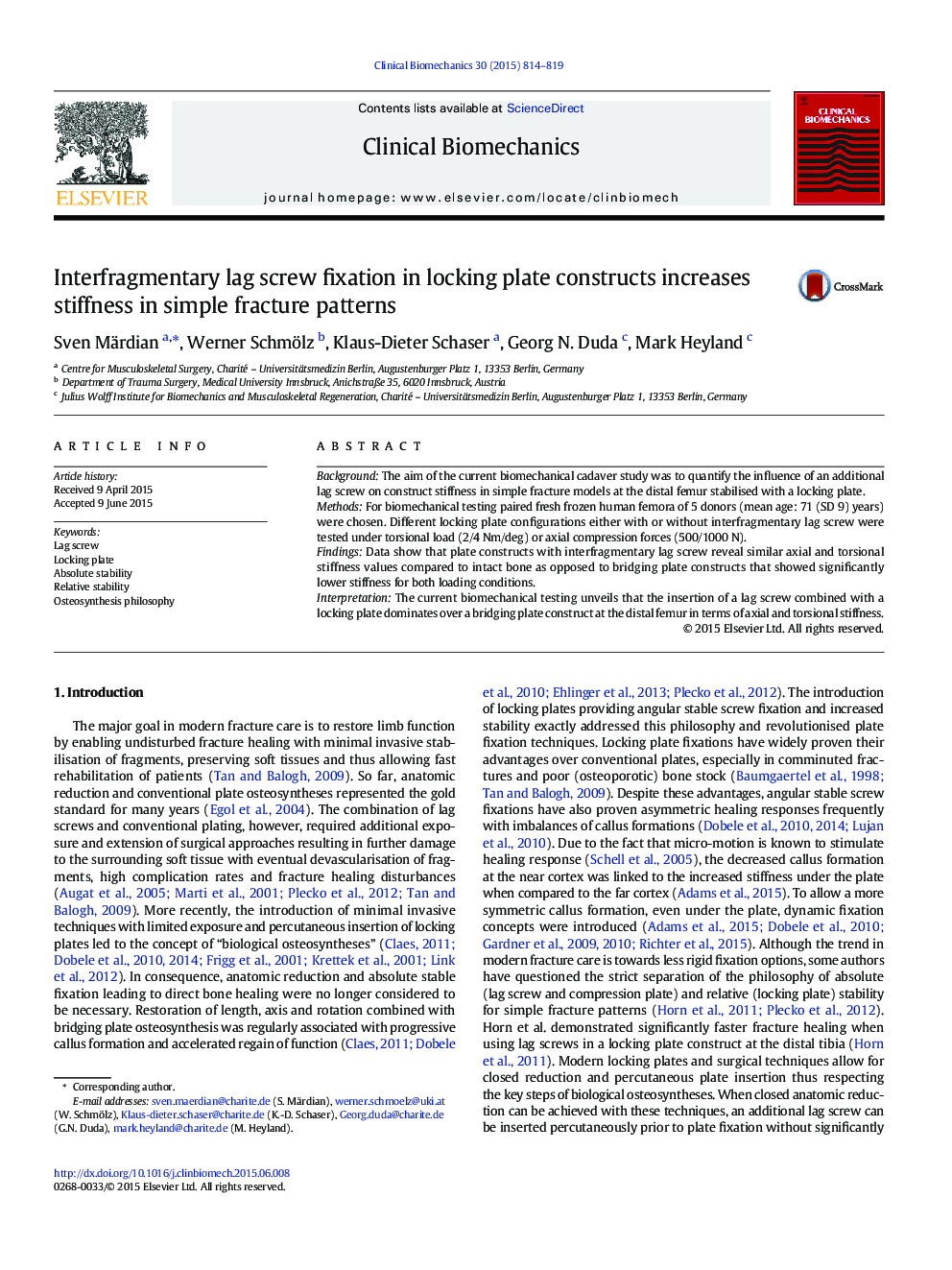| Article ID | Journal | Published Year | Pages | File Type |
|---|---|---|---|---|
| 6204685 | Clinical Biomechanics | 2015 | 6 Pages |
BackgroundThe aim of the current biomechanical cadaver study was to quantify the influence of an additional lag screw on construct stiffness in simple fracture models at the distal femur stabilised with a locking plate.MethodsFor biomechanical testing paired fresh frozen human femora of 5 donors (mean age: 71 (SD 9) years) were chosen. Different locking plate configurations either with or without interfragmentary lag screw were tested under torsional load (2/4Â Nm/deg) or axial compression forces (500/1000Â N).FindingsData show that plate constructs with interfragmentary lag screw reveal similar axial and torsional stiffness values compared to intact bone as opposed to bridging plate constructs that showed significantly lower stiffness for both loading conditions.InterpretationThe current biomechanical testing unveils that the insertion of a lag screw combined with a locking plate dominates over a bridging plate construct at the distal femur in terms of axial and torsional stiffness.
